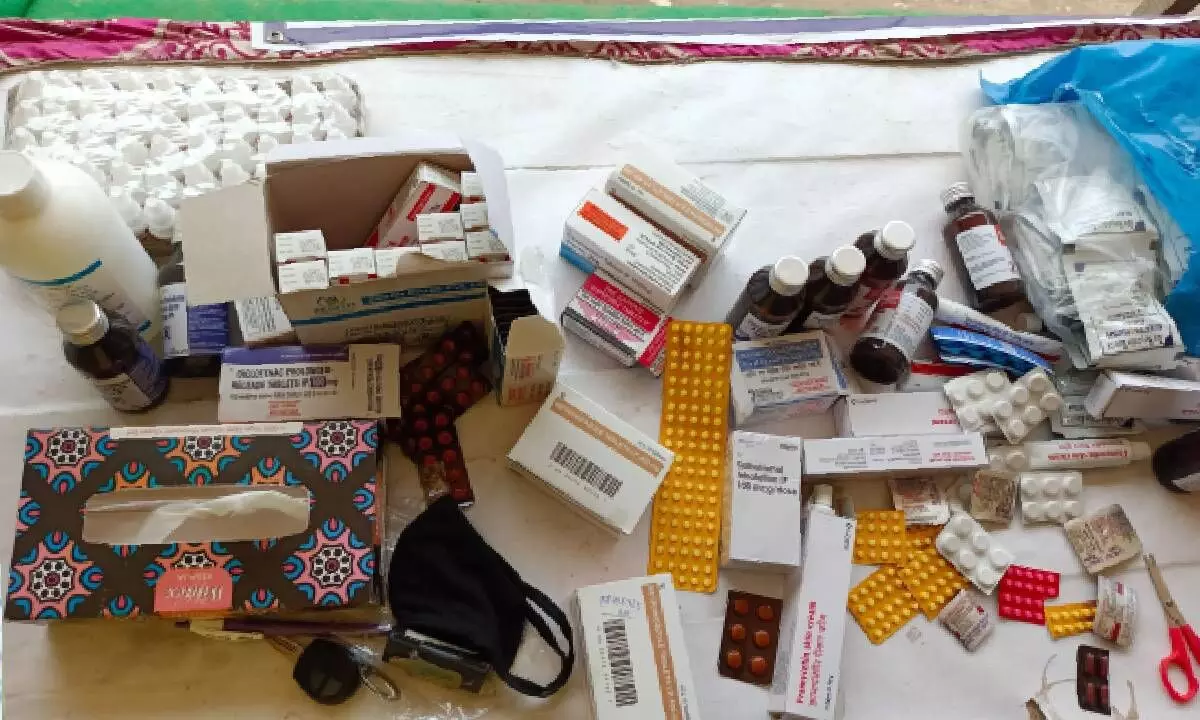Road to recovery long and uncertain for Delhi flood victims
The supposed relief camp at Khajoori Khas is a picture of distress. The whole place is a mangled stitch of emergency and exhaustion
image for illustrative purpose

On the side of a very busy road, between the relief and the rubble, the Shivir flood camp at Khajoori Khas shelters at least 150 residents of Garhu Mandu village in North East Delhi. The white tents under the flyover are buzzing with facilities and flies along a running highway and in the distance, the Yamuna flows (now) flattened next to towering power lines. On a usual Wednesday morning, the tents are awake with the residents who identify themselves as rickshaw pullers, laborers, wives, and kids. Some people are still asleep inside on cots that are nothing but naked limbs of wood and metal covered with daris and mattresses. Outside, a white-colored board lists the facilities available. Waterproof tent, electricity, drinking water, fans, toilets, beds. A medical facilitation desk is set up along the encampments and the Civil Defense men in yellow vests are getting the place geared up for the Delhi Government's medical team. I have just settled down in my chair when a boy in a red rag comes knocking at the desk asking for ''dawa''. It is 9 in the morning and the medical supplies are yet to be laid out. Under a blinking lightbulb and steady traffic, I hear the medical attendant telling him to come back in some time. We are surrounded by a decibel-punching parade of office-goers, beggars, old men walking on sticks, 100 per cent electric DTC buses, smoke-gushing four-wheelers, autorickshaws, Pulsars, Activas, and dupatta-strapped ladies - all humming along the road before these temporary homes of white tarpaulin held together with electric wires and standing fans. Women coming to the camp squat and clutch their sarees to cross the Delhi Police barricades blocking out the rush hour traffic. A Delhi Jal Board tanker across the street is ensuring a steady supply of drinking water for the displaced. In the grip of a busy road, people lie idle inside the makeshift shelters. In the middle of all the honking and hawking and hollering, women and men are still with quiet eyes. They watch from the footpath the life rushing by. From every angle of view, this place is a scream.
As the morning paces up, more residents start arriving at the medical facilitation desk. Under a roaring flyover, name, age, diagnosis, and prescription are penned down in a notepad, and strips of paracetamol are scissored off and handed out. A team of three members from the medical staff is on duty diagnosing the residents and giving away meds. A balding man points toward his hand where he is experiencing some kind of skin rash. He leaves with a Framycetin cream. Two women - one covered in red pallu from head to neck and another shrunken and complaining of body pain - come in. Strips of diclofenac, metronidazole, zinc sulphate, ciprofloxacin, salbutamol, vitamin C, packets of oral rehydration salts, and bottles of cough syrup and eye drops are given out as traffic and the sun peak in the background. The medical team battles dust and pollution from the corridor construction project underway nearby as a part of the 155km national highway connecting Akshardham (Delhi) to Saharanpur Bypass (Uttar Pradesh). Flies poke around. Gravel assaults shoes. Heat beats down on foreheads. Then around 10:30, bread pakoras and packs of Frooti arrive. The Delhi Government is providing the camp residents with three meals a day. Children, men, and women rush to the desk where the food is stocked. I go looking for a washroom and return unrelieved. I find only dirty facilities across the road and no hope in the filthy toilets of Aggarwal and Bikaner restaurants past the signal. Even though sustenance is made possible, basic necessities like proper sanitation remain a challenge. When I am back, a distressed lady has stormed the medical camp - her voice raised in frustration -lamenting that she is yet to receive her breakfast. The urgency of hunger and the strain of displacement have pushed her to the limits. She is only one among the hundreds venting their frustrations in this moment of vulnerability brought on by the floods. These people have lost their sense of security among their houses, belongings, shops, factories, savings, mobile phones, and books to the floods. And then to have to pitstop here in the middle of a live road with kids running around between speeding vehicles and hurrying faces is a worrying reality to face every day. The supposed relief camp is a picture of distress. The whole place is a mangled stitch of emergency and exhaustion. Despite the efforts of aid organizations and government support, the road to recovery appears long and uncertain for those who have been uprooted from their homes. The floodwaters might be receding but are the woes of these displaced residents going to retreat anytime soon?

